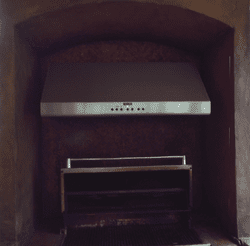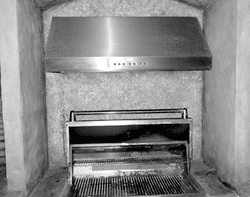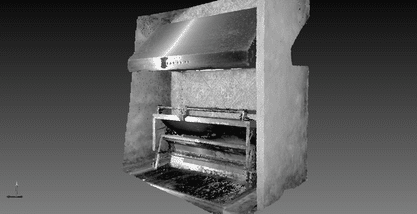3D Laser Scanning Basics
Explaining FARO Laser Scanning
A example of an image clipped from one scan of the 3D laser scanner. Initially it looks like a simple color photo without a flash, resulting in poor resolution.
Black and White Photo? or 3D image!
This same image clipped from a Quickview of a laser scan is seen here with the color stripped away. While it looks like a simple black and white photo, what you are looking at is a set of hundreds of thousands, if not millions of points of measure, in 3D!
Measure With the Click of a Button!
Anywhere in this small section of the 3D scan, or in a full 360 degree view of this scene, with the click of a button the operator can measure between two objects, and if needed, automatically the program will provide the right angle measurement as well.
How Can This Help Your Business?
While this technology is impressive to look at, how can it help your business?
1. Accident Reconstruction companies can come to ALSS to rent the 3D laser scanning equipment and use it to scan an entire accident scene. With data like this, measurements can be taken, alternate views can be collected of the scene and stored for possible use in trial. And the scene can easily be imported into animation software enabling qualified animators the data needed to recreate the incident in 3D for use in trial or investigation.
2. Architectural uses for this scan data are unlimited. Whether a firm is tasked with adding onto an existing building or something as simple as refurbishing its interior, this data can be used to design the entire project on thier CAD software. In fact, with a +- of just millimeters in accuracy, much of the project construction can be precut and pre built before one nail is driven, reducing the risk of mistakes, and speeding up the project. Less down time is an advantage for the customer, few mistakes is an advantage for everyone. The entire project is now stored in the computer and can be revisited at any time for additional measurements!
3. Flood or Fire Investigation require a tremendous amount of visual data to be recorded and stored. Hand measurements are generally taken and paired with corrisponding photos. But with large projects such as large homes or commercial properties, this hand recorded data can become quite overwhelming. With scan data and the ability to use an offsite server like Webshare from FARO, entire projects, regardless of their size are easily retrieved. They can be literally “walked through” by any investigator and reviewed. Going back to the scene may not be an option, but revisiting the location in the computer to see exactly how it was is at ones fingertips. Anything that may need to be measured, counted or recorded can be done in 2 or 3D high definition color. Flythroughs can be created before and after to show the initial extent of the damage, as well as the finished repaired project for companies who offer full service to disaster customers.
4. Video Game Design has come a long way from the days of two dimensional “Space Invadors”. Now 3D envirenments are critical for the realism of the games. With envirenments scanned in this manner, companies build entire worlds which look as real as looking out your window! Top game builders are now using the same 3D laser scanner as you can get from ALSS with just a phone call! Orlando Sentinal Writes About 3D Laser Scanning & Video Game Design
Other Uses for 3D Laser Scanned Environments
Convert 3D Images Into 2D Floorpans In Seconds
Once the interior of a structure is scanned, in just a hand full of steps this 3D data can be converted into a 2D floorplan. This same data can be exported, 3D or 2D into any number of CAD programs used by Architecture companies around the world. Anything can be measured in the computer with the click of a mouse.





